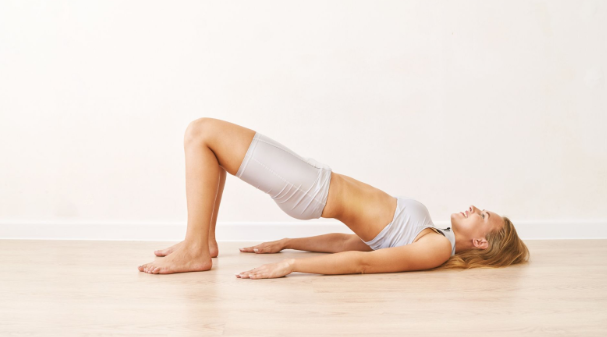
Pelvic floor health is a crucial but often overlooked aspect of women’s well-being, with pelvic organ prolapse (POP) affecting millions of people worldwide. From the subtle discomfort of stress incontinence to the more pronounced symptoms of prolapse, the impact on daily life can be profound. Understanding the causes, symptoms, and treatment options of POP is essential for women of all ages, especially those who have had childbirth or hormonal changes.
Yoga can be a powerful tool for improving pelvic floor strength and function. As a woman who has personally navigated the challenges of postpartum incontinence, I understand the importance of finding effective, non-invasive solutions that allow us to harness our body’s innate wisdom, promoting strength, resilience and vitality from within.
Understanding Pelvic Organ Prolapse
POP is a common condition characterized by weakening of the pelvic floor muscles, which causes the pelvic organs to descend or bulge into the vaginal canal. This weakening can be due to a variety of factors, including childbirth trauma, hormonal changes, obesity, and aging.
The pelvic floor muscles act like a hammock, providing support to the bladder, uterus and rectum. When these muscles weaken, the organs they support can sag or prolapse, leading to uncomfortable symptoms and complications.
According to the American College of Gynecology, POP affects approximately 1 in 4 women over the age of 40, with higher prevalence among women who have given birth vaginally, are obese, or have reached menopause. Common symptoms of POP include stress incontinence (leaking during activities like coughing, sneezing, or exercising), vaginal laxity, painful intercourse, and constipation. Early diagnosis and intervention are crucial to effectively manage POP and prevent further complications.
Diagnosis and treatment options
POP is usually diagnosed during routine pelvic exams, during which healthcare providers assess the position and support of the pelvic organs. Symptoms such as urinary leakage, vaginal swelling, and discomfort during sex may prompt further evaluation. Early detection is essential to prevent the progression of POP and minimize associated symptoms.
Treatment options for POP range from conservative measures to surgical interventions, depending on the severity of the prolapse and the individual’s preferences. Nonsurgical approaches include lifestyle modifications, pelvic floor physical therapy (i.e., yoga), noninvasive wearable devices, and other lifestyle modifications.
In cases where conservative measures are insufficient, surgical procedures may be recommended to repair and strengthen the pelvic floor. However, it is important to carefully weigh the risks and benefits of surgery, taking into account factors such as general health, lifestyle and personal preferences. Speaking with your healthcare professional to develop a tailored treatment plan is essential to effectively managing POP and optimizing pelvic floor health.
The role of yoga in pelvic floor health
Yoga offers a holistic approach to pelvic floor health, addressing both the physical and mental aspects of well-being. Through a combination of poses (asanas), breathing techniques (pranayama) and mindfulness practices, yoga can strengthen and tone the pelvic floor muscles while promoting relaxation and stress reduction.
Specific yoga poses targeting the pelvic floor muscles help improve strength, flexibility and coordination. Poses like Bridge Pose (Setu Bandhasana), Goddess Pose (Utkata Konasana) and garland installation (Malasana) help engage the pelvic floor while encouraging good alignment and body awareness. Additionally, practices such as root locking (Mula Bandha) and Abdominal Lock (Uddiyana Bandha) focus on activating and lifting the pelvic floor muscles, improving their function and support.
Beyond the physical benefits, yoga offers emotional and psychological support to women facing pelvic floor problems. Mindfulness practices cultivate self-awareness and acceptance, allowing women to connect with their bodies and honor their unique journey. By integrating yoga into their pelvic floor care routines, women can cultivate resilience, balance and vitality from within, promoting a deeper sense of well-being and empowerment.
Integrating yoga into pelvic floor care
Integrating yoga with pelvic floor care can be a powerful step toward holistic wellness. Start by establishing a regular yoga practice, incorporating poses that specifically target the pelvic floor muscles. Start slowly and gradually increase the intensity and duration as your strength and comfort level improve.
Consistency is key, so try practicing yoga several times a week to get the full benefit. Listen to your body and honor its needs, modifying poses as necessary to accommodate any discomfort or limitations. Remember that progress takes time and patience is essential on this journey of self-discovery and healing.
In addition to asana practice, explore mindfulness techniques such as meditation and breathing to cultivate a deeper connection with your body and mind. These practices can help reduce stress and anxiety, promoting overall pelvic floor health and well-being.
As you embark on this path of self-care and empowerment, trust the wisdom of your body and the healing power of yoga. By nourishing your pelvic floor with compassion and intention, you can take back control of your health and embrace a life of vitality and resilience. Let yoga guide you on your journey to pelvic floor wellness and a stronger, more balanced foundation for life.
– Gloria Kolb is the CEO and co-founder of Elitenean FDA-approved, non-invasive portable treatment for women with urinary incontinence. As an inventor with 30 patents, Gloria’s accolades include winning Best New Product of 2019 from My Face My Body, Sling Shot 2020, and being a top 10 finalist in Google’s Women Startup Challenge. Gloria has also been featured in Forbes as one of the top scientists driving innovation in women’s health. His creative designs and problem-solving skills have earned him recognition, including Boston’s “40 Under 40” award and the MIT Review’s “World’s Top Innovators under 35” award. With degrees in mechanical engineering from MIT and Stanford and an MBA in entrepreneurship from Babson College, Gloria’s expertise extends to consulting, where she evaluates technology and clinical markets for various inventions and startups.
